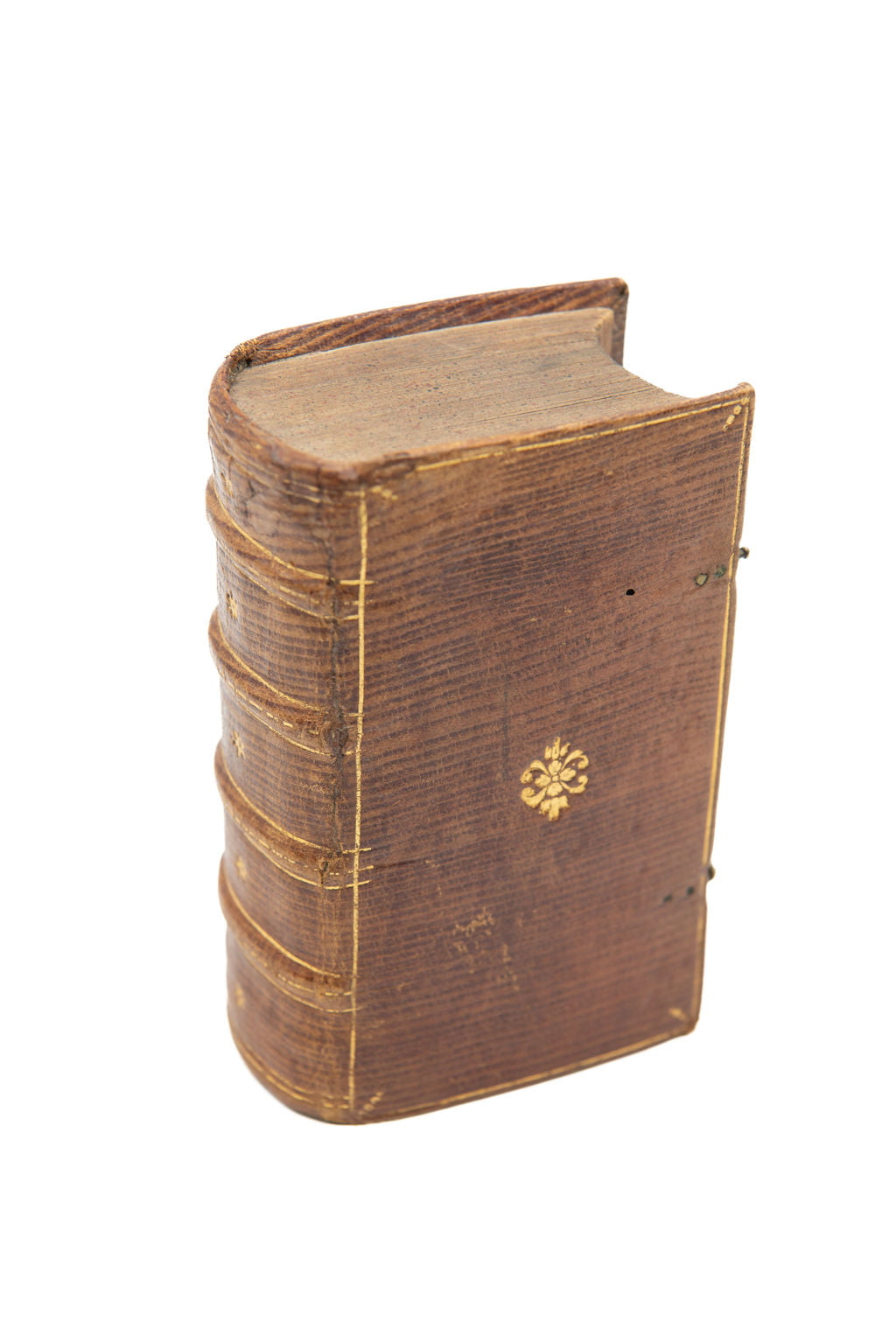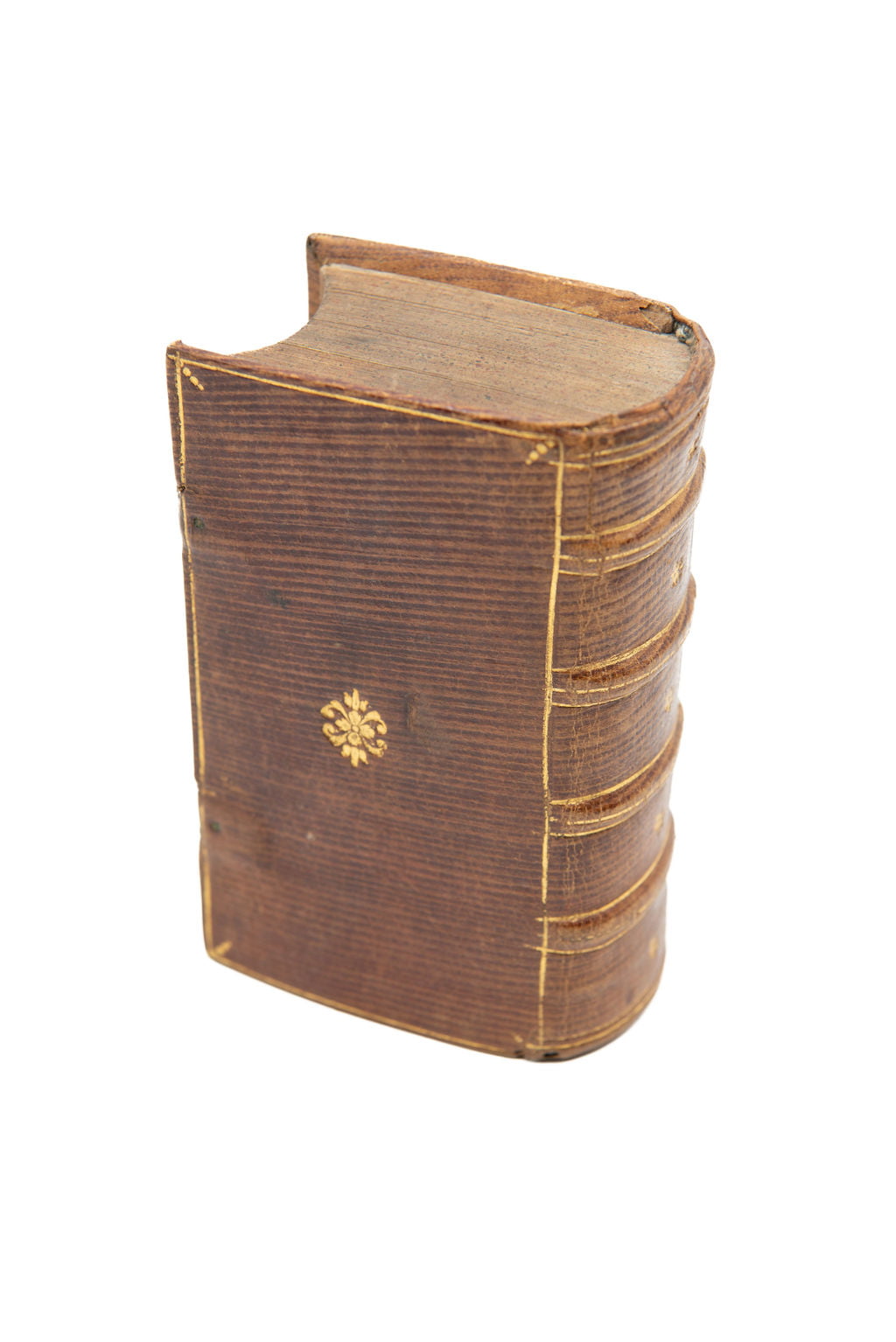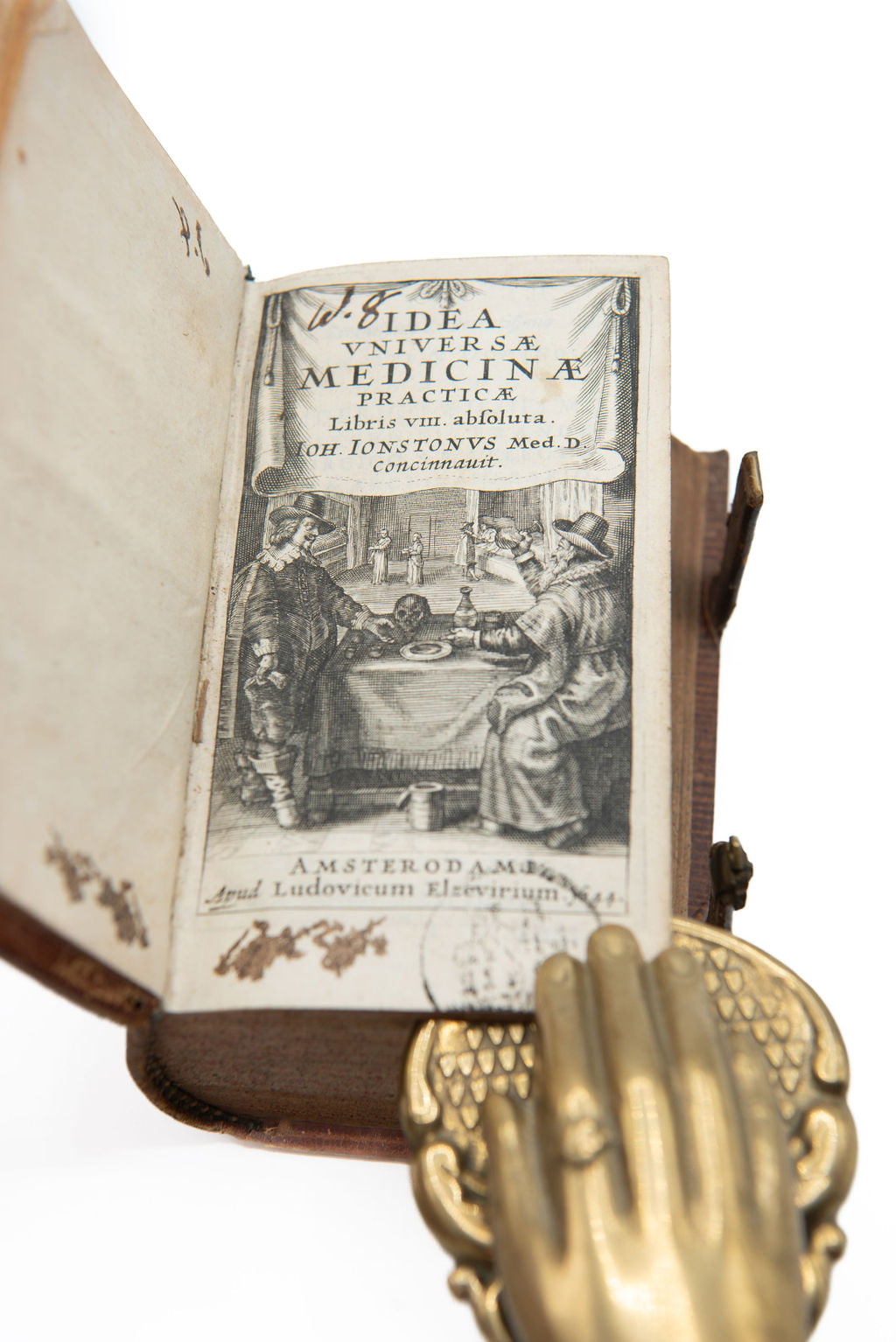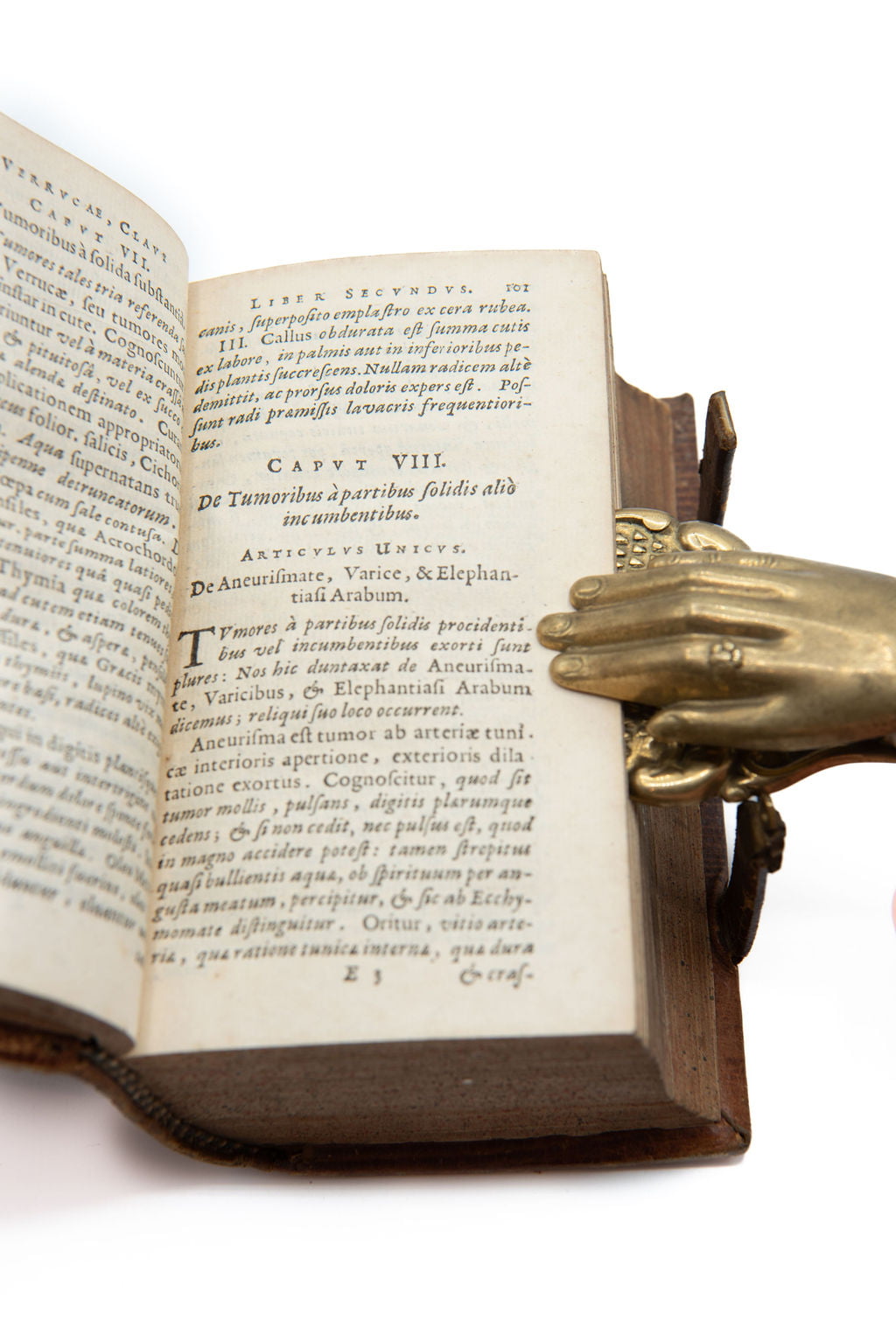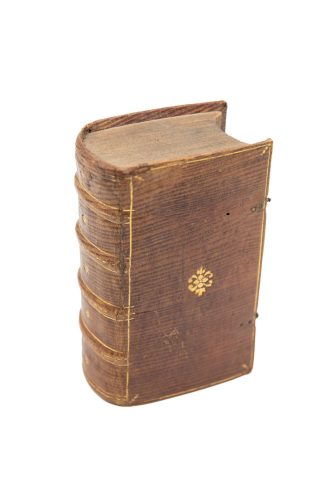JONSTON, John.
Idea universae medicinae practicae libris VIII
Amsterdam, apud Lowijs III Elzevier, 1644£1,450.00
FIRST EDITION. 12mo, pp. (xii) 759 (xv) lacking final blank, but with 118 blank ll. added at end. Italic and Roma letter, woodcut floriated initials, woodcut decorated endpiece, charming engraved t-p, faded very early stamp at foot and smudged lettering, ink case mark at head. Slight age yellowing, very light browning to a couple of gatherings. A very good copy, crisp and clean, in unusual contemporary striated calf over bevelled boards, covers single gilt ruled, gilt dots at corners and fleuron at centres, spine with gilt ruled raised bands and gilt star tools in compartments, repaired at head, all edges sprinkled blue and red. Two gilt ruled leather straps, one decorated brass clasp.
A very good copy of the first edition of this highly successful medical work. John Jonston (Polish Jan Jonston, 1603-1675) was a Polish world-famous physician, biologist and historian born to a family of noble Scottish origins. During his life, he travelled extensively across Europe for his education: he attended St. Andrews University, where he studied theology, and later the Universities of Cambridge, Frankfurt, Franeker and Leiden, where he specialised in botany and medicine. His reputation as a physician spread quickly, and everywhere he travelled he established contacts with outstanding men of science. An extremely prolific author and a man of immense knowledge, his large corpus include encyclopaedias of natural science, treatises on zoology, botany, hygiene, medicine, but also works on ethics and history.
In 1642, Jonston was offered the post of head of the medical department at the University of Frankfurt. He rejected, however promised to prepare a textbook of medicine for the students of this university: the result was ‘Idea universae medicinae practicae’ (here). An encyclopaedic handbook of clinical medicine, it is arranged in eight books dealing with diseases in general, external and internal diseases, fevers, and their appropriate treatments. Interestingly, Jonston discussed a number of conditions concerned with insanity and neurosis. “In the foreword Jonston emphasizes that the information on various remedies comes from the works of the best physicians and includes what he had been able to learn from the outstanding people he met during his voyages. (…) Jonston intended his textbook to be a summary of all medical knowledge available at that time. When discussing diseases, he first writes about their symptoms, ten causes followed by the differences between diseases, finally treatment. Jonston is the first man to introduce a new branch of medicine, the medicine of labour, and to describe and systematize the diseases of the nails. (…) The treatise had many editions, and its content was twice considerably enlarged and revised. It is to this treatise that Jonston owes his name of one of the authors of the modern classification of diseases. (…) According to Stanisław Schwann, Jonston’s textbooks of medicine and nature were still compulsory in all German universities in 1721” (Matuszewski)
This copy was bound including more than 100 additional blank pages at the end, most likely for a student. Medical handbooks in the Renaissance were often prepared in this way on commission: the blank pages would have been used by the owner to write annotations, summaries and indexes.
USTC 1031948; STCN 852264976; Krivatsy 6258. Not in Garrison-Morton, Heirs of Hippocrates, Brunet or Graesse. A. Matuszewski, ‘Jan Jonston: oustanding scholar of the 17th century’, Studia Comeniana et Historica (1989).In stock


